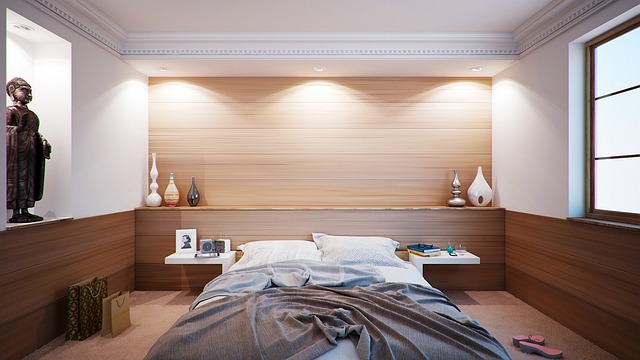Transforming Forgotten Attics: The Rise of Bespoke Loft Libraries
Imagine ascending a narrow staircase, pushing open a creaky door, and stepping into a cozy sanctuary filled with floor-to-ceiling bookshelves, plush reading nooks, and soft, ambient lighting. This isn't a scene from a quaint bookshop—it's the latest trend in home design: the bespoke loft library. As homeowners seek to maximize space and create unique, personalized retreats, attics are being transformed into literary havens that blend form, function, and a touch of whimsy.

The Allure of Loft Libraries
The concept of a loft library taps into several current design trends and lifestyle preferences. First, there’s the growing desire for dedicated spaces that support mental wellness and personal growth. A private library offers a quiet retreat for reading, reflection, and relaxation. Second, the trend aligns with the renewed interest in physical books and vinyl records, as people seek tactile experiences in an increasingly digital world. Lastly, loft libraries appeal to those looking to maximize their home’s square footage without major structural changes.
Designing the Perfect Loft Library
Creating a loft library requires careful planning and design considerations. The sloped ceilings typical of attic spaces can be both a challenge and an opportunity. Custom-built shelving that follows the roof’s angle can create a striking visual effect while maximizing storage. Incorporating built-in window seats or cozy reading nooks under the eaves can transform awkward corners into charming features.
Lighting is crucial in these often-dim spaces. A combination of natural light from skylights or dormer windows, supplemented by strategically placed task lighting and ambient fixtures, can create a warm and inviting atmosphere. Some designers are experimenting with fiber optic ceiling installations that mimic a starry night sky, adding a touch of magic to nighttime reading sessions.
Practical Considerations
While the aesthetic appeal of a loft library is undeniable, there are practical aspects to consider. Structural reinforcement may be necessary to support the weight of books and shelving. Climate control is essential to protect valuable books from temperature fluctuations and humidity. Innovative solutions like thin-profile HVAC systems or radiant floor heating can maintain comfort without compromising space.
Accessibility is another key factor. For homes where the attic is accessed by a narrow staircase, installing a small dumbwaiter system can make transporting books and refreshments easier. Some homeowners are opting for sleek, space-saving spiral staircases that add a sculptural element to the room below while providing easier access to the loft.
Curating the Collection
A loft library is more than just a storage space for books—it’s an expression of personal taste and interests. Many homeowners are working with professional organizers or librarians to curate their collections, creating themed sections or color-coded arrangements that are both functional and visually appealing. Digital cataloging systems allow owners to keep track of their collections and even share them with fellow bibliophiles.
Tech Integration in Traditional Spaces
While the loft library celebrates the tactile pleasure of physical books, it doesn’t mean technology is excluded. Subtle tech integration can enhance the space without detracting from its traditional charm. Hidden charging stations, discreet smart speakers for ambient music or audiobooks, and e-reader docking areas can seamlessly blend the old with the new.
Some enthusiasts are taking tech integration further by incorporating augmented reality features. Imagine pointing a tablet at a shelf and seeing additional information about the books, author biographies, or even holographic previews of the content.
The Social Aspect of Private Libraries
Interestingly, these private libraries are fostering new forms of social interaction. Book clubs are hosting meetings in members’ loft libraries, creating intimate gatherings that celebrate literature and design. Some homeowners are even opening their loft libraries for small community events or as unique spaces for short-term rentals, allowing others to experience the joy of a night surrounded by books.
Economic and Environmental Impact
The trend of converting attics into libraries has had a ripple effect on various industries. Custom furniture makers and carpenters report increased demand for bespoke shelving and reading chairs designed to fit the unique contours of attic spaces. Additionally, the secondhand book market has seen a boost as homeowners seek to fill their shelves with character-rich volumes.
From an environmental perspective, repurposing existing space rather than building additions is a more sustainable approach to home improvement. Many loft library projects incorporate reclaimed wood and energy-efficient lighting, further reducing their environmental impact.
The Future of Loft Libraries
As the trend continues to grow, we’re likely to see further innovations in loft library design. Modular systems that allow for easy reconfiguration, integration of virtual reality for immersive reading experiences, and the use of sustainable materials like bamboo or recycled plastics for shelving are all on the horizon.
The bespoke loft library trend represents more than just a clever use of space—it’s a celebration of literature, personal expression, and the enduring appeal of a quiet place to lose oneself in a good book. As our homes continue to evolve to meet our changing needs and desires, the transformation of forgotten attics into havens of learning and imagination stands as a testament to the power of creative design in enhancing our living spaces and our lives.





